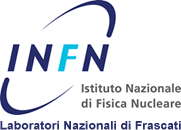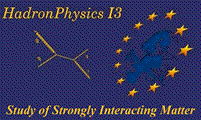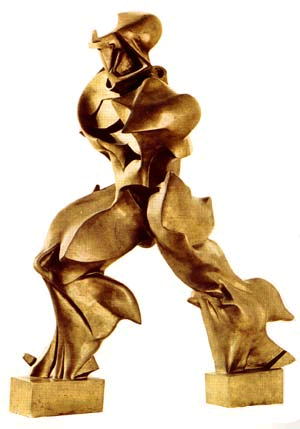"Unique Form of Continuity in Space" |
|
|||||||||||||||||||||||
Secretary: Donatella Pierluigi
|
Umberto Boccioni is generally considered the greatest Italian sculptor of the early 1900’s. He was also a notices painter. Boccioni was one of Italian experimental artists who organized in 1909 as “futurists”. In his sculpture, Boccioni tried to express certain futurist ideas about motion and space. Through distortion and the complex placement of forms, Boccioni attempted to represent the blend of an object with its path of movement or its surrounding space.
Boccioni was born in Calabria, in the south of Italy. His parents moved to Rome in 1899 where he and Severini were instructed in the Divisionist style by Balla. Boccioni continued to be influenced by both Divisionism and Symbolism, travelling to Paris – where he briefly met Modigliani – and through western Russia in 1906. Returning to Italy he worked intensively to devise a pioneering modern art. Impressed by the revolutionary spirit of Marinetti’s Founding and Manifesto of Futurism (1909), Boccioni was responsible for integrating the visual arts into this literary movement, along with Russolo and Carrà. The dominant figure of the group and its most important theorist, Boccioni rigorously analysed dynamism and motion in his paintings. He moved away from a Divisionist technique and began to employ the formal vocabulary of Cubism from around 1911. The following year Boccioni became fascinated with sculpture after seeing the works of Medardo Rosso in Paris and he began to experiment with this medium, attempting to unite his subjects with the space and objects surrounding them and advocating the use of a variety of materials in the creation of the work. In 1914 he published his theoretical text Futurist Painting and Sculpture and served with Marinetti and other Futurists in the First World War. He died after falling from a horse during a training exercise in 1916.
Unique Form of Continuity in Space Four bronze casts were made from Boccioni's plaster original. The earlier two were made with a polished surface (of which this is one) while the two later casts retained a finish closer to that of the original plaster. In his sculpture, shown above, 'Unique Forms of Continuity' (1913), the futurist sculptor Umberto Boccioni attempted to illustrate the interaction of a moving object with the space that surrounded which, he believed, “is achieved through the intuitive search for the one single form which produces continuity in space”. He coined the term Plastic dynamism, describing it as “the simultaneous action of the motion characteristic of an object (its absolute motion), mixed with the transformation which the object undergoes in relation to its mobile and immobile environment (its relative motion).” Instead of the concept of a sharp differentiation of bodies, Boccioni substituted a “concept of dynamic continuity as the only form… since dynamic form is a species of fourth dimension, both in painting and sculpture, which cannot exist perfectly without the complete concurrence of those three dimensions which determine volume: height, width, depth.” Text by Richard Bright.
|
|||||||||||||||||||||||
 |
 |
|||||||||||||||||||||||
01/13/2005 Donatella Pierluigi |
||||||||||||||||||||||||

